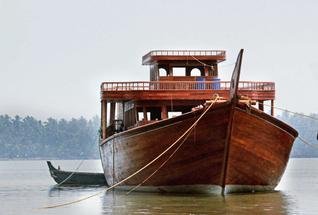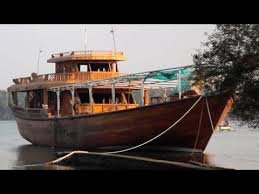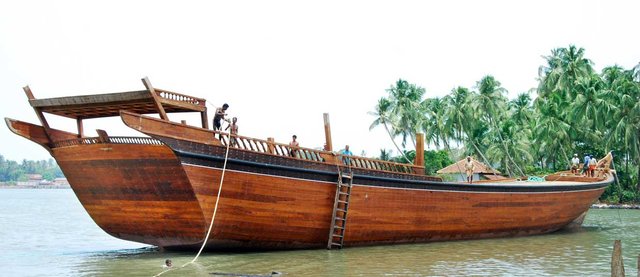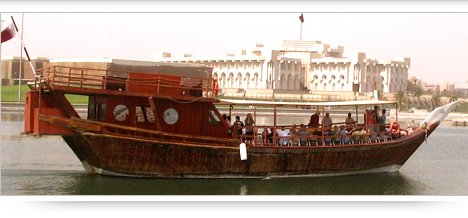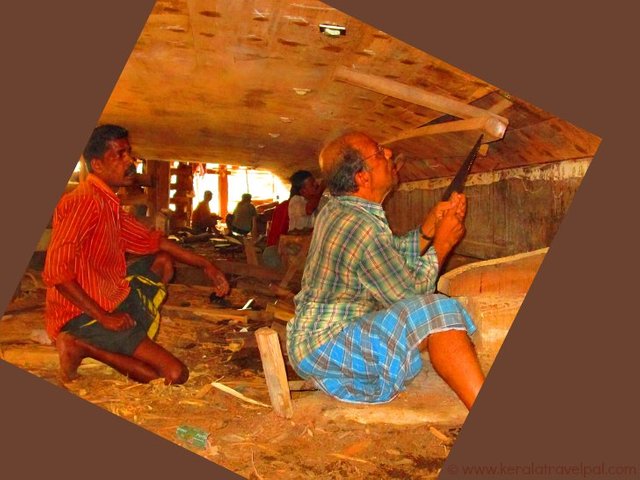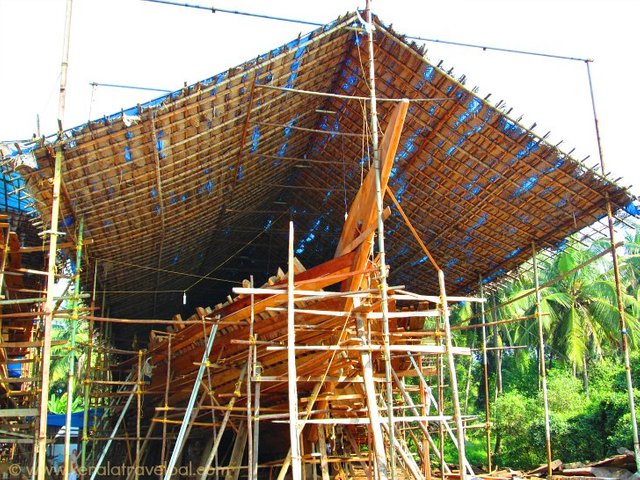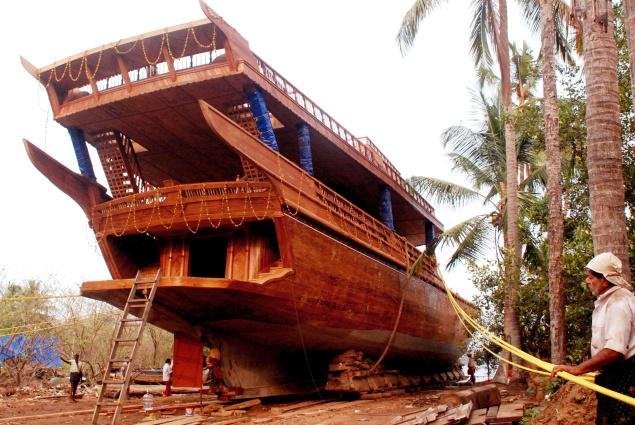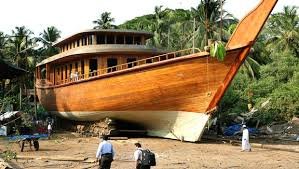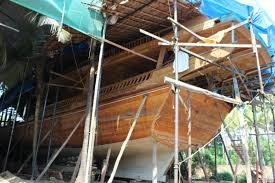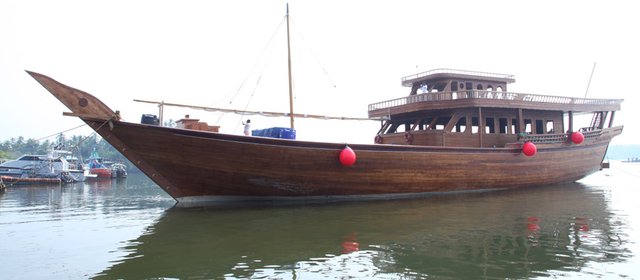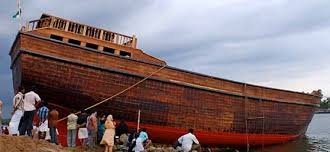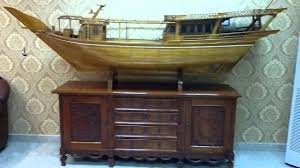Uru boats, the largest Handcrafted boats in the world
Uru boats, well can as well be said as the largest Handicrafts in the world.
Being a professional Marine Surveyor, boats are my passions. I board, inspect and report upon a wide array of canoes, boats, yachts and ocean going ships as part of my job. Being passionate about boats is an icing on the cake to me.
So when I heard about this Uru boat, first time through a friend from Kerala (a state in south India) I was naturally curious. That was because this Uru boat seemed to be very distinct and not the run of the mill type boats or yachts that we see in plenty, flocking the Marinas around the world.
I set out to find out more about this Uru boat and the story that unraveled was fascinating in more ways than one. This is truly a whole ancient culture and wisdom in full flow.
A brief history of how Uru came into being:
Uru (meaning Fat, in local language) boats draw their design cue from the Arabs who were the early traders to southern India, many centuries ago. The aesthetics, measurements, the science and art of this boat building is said to have come from the Arabs in middle east over 1500 years. The Arabs like the Europeans, established trade relationship with India many centuries ago for the spices and a variety of other goods and when they arrived in Kerala by sea, to their surprise they found that extremely high quality timber was available in abundance and thus they became the pioneers in laying foundation in building these boats. So eventually these vessels came to be called as Arabian trading ships or dhows.
Now, in these modern times of computers and Crypto currency, Uru Boats are completely handcrafted boats built exclusively in the small town of Beypore, Kerala, South India. The fascinating facts about these boat building are there are No drawing made, No designs, No technical data sheets, No blue prints, virtually nothing is placed on record or documented on paper right from concept through keel laying to vessel construction to launching.
There are no logs or documentation or records whatsoever maintained during the entire construction process. The master carpenter has all the design in his head and assigns the work to his assistant carpenters on a daily basis. So the whole ship building springs from the mind of a single person. And think of it. This is no small boat by any measure. These boats are huge, about 300-600 Ton capacity with lengths extending up to 180 meters.
While Teak wood is used for the construction of the hull ( the boat body), wild jack wood and rose wood are used for interior works.
Adding to that mystery, no electrical or heavy mechanical tools are ever used in the construction of these boats. Every section is handmade using basic carpentry tools and based on verbal or on instructions hand down by the master carpenter on a day to day basis. The hull planks were interconnected with well chiselled and shaped teak wood. No nails were used in fastening the planks. Instead jute coir is used as a fastening material. It takes about 50 experienced carpenters over a period of 3-4 years to build one Uru boat. However with changing times, nails are used now a day for fastening purpose instead of interlocking planks.
The tiller and rudder are one piece known as Chukkan. Chukkan is used to turn the direction and total control of the boat. Consider it as the steering of the boat, The Chukkan of an Uru boat is a very large beautiful piece of ornate wood which extends the entire height of the boat. This is a very special unique design factor of Uru boats. But again modern design has changed this aspect too due to convenience and mechanization.
Incidentally there are very few master carpenters in Kerala, who have the complete knowledge of building these boats. The skills are closely guarded secret and are passed down the family from generation to generation. Hence it may be safe to state that these skills are in the verge of extinction. However In recent years, the wealthy sheikhs of middle east have shown interest in these magnificent vessels and are getting built as their private yachts ( of course with all modern gadgetry and motors and refurbishments).
Another fascinating aspect that is said is that the design guidance is taken from certain Arabic verses which provide precise geometrical and mathematical calculations for construction.
The water line also called as the load line is a very important fundamental design in any vessel. It is essentially the line where the water level touches the hull (boat) and it is predetermined by calculations of buoyancy, density and many more factors. This waterline marking is predetermined by the master carpenter before the boat is constructed and surprisingly when the vessel is launched the design water level precisely matches the actual or true water level with amazing precision. That is another facet of these master carpenter’s amazing boat building skills.
Initially these boats were built as sailing vessels. But now motors are fitted to make it a mechanized vessel to suit the modern day needs and comfort.
The launching of a Uru boat is a special occasion calling for a feast. Specials prayers are offered and the boat is launched into the river, manually by using the rope and pulley technique.
These huge world’s largest handcrafted ornate wooden boats are truly an impressive piece of artistry on sea. In the present modern days, it is commendable that the century old tradition of building boats by hand are still kept alive by a handful of dedicated craftsmen and a few lovers of art and tradition who make it happen.
When we look ahead at the future, It's always rewarding to take a pause to look back at mankind's great heritage. We have a lot to learn from our earlier civilizations, enrich ourselves with their wisdom and also preserve them for posterity for our future generations.
Credits: All images are downloaded from internet from various websites. A few of them are:
source-1
source-2
source-3
If you liked reading my blog. Please check out my earlier blog on icebergs here
